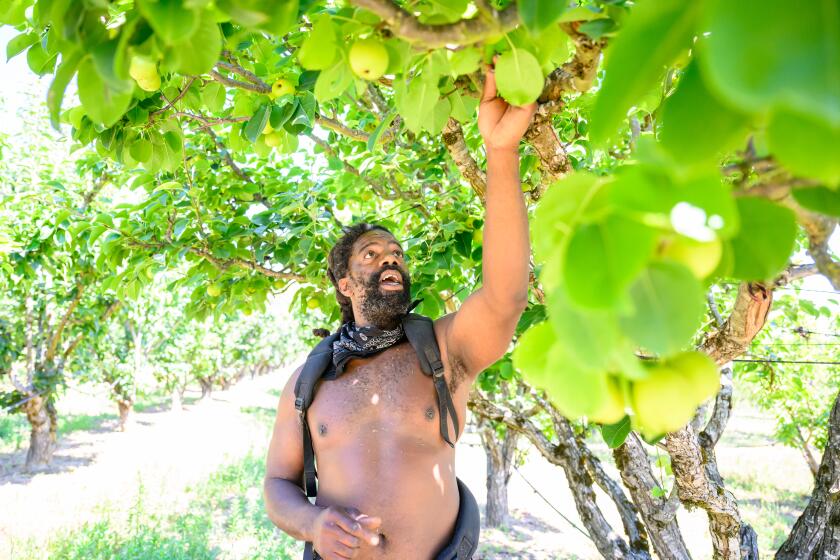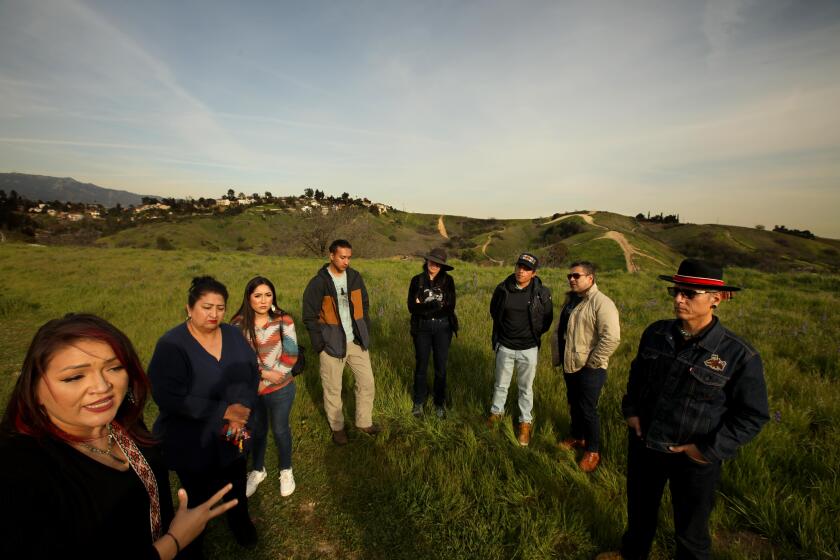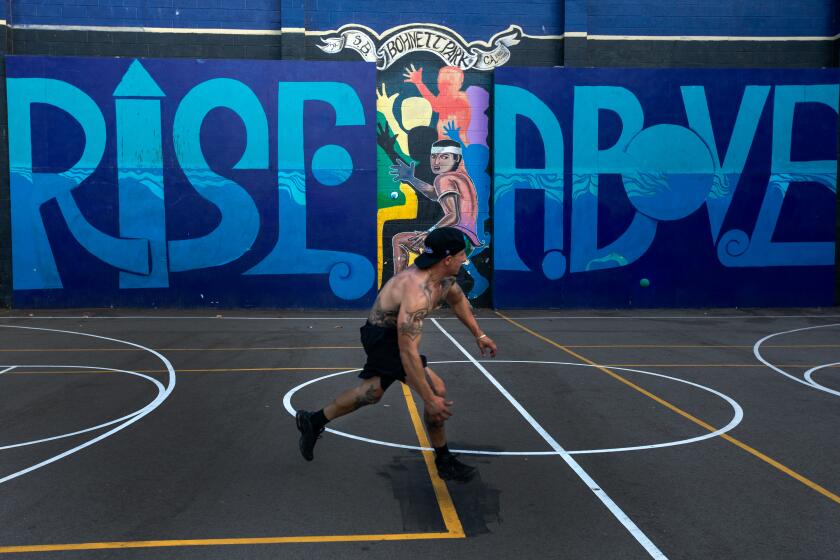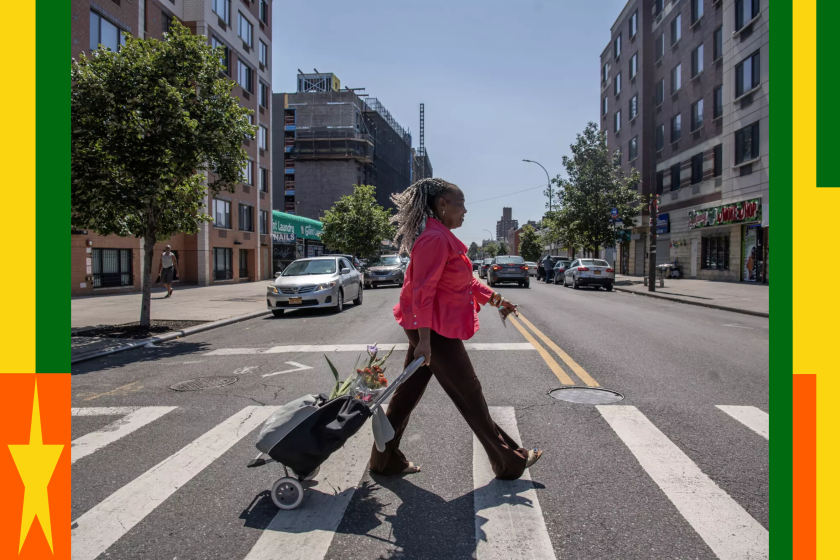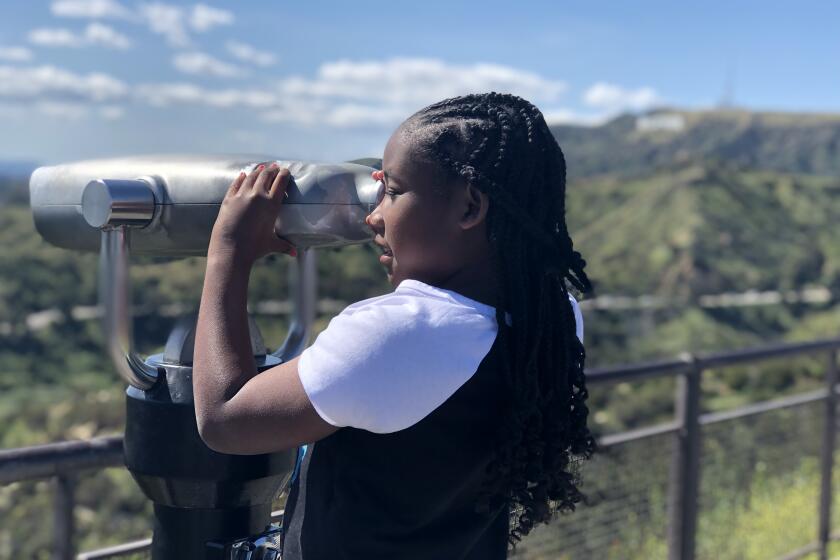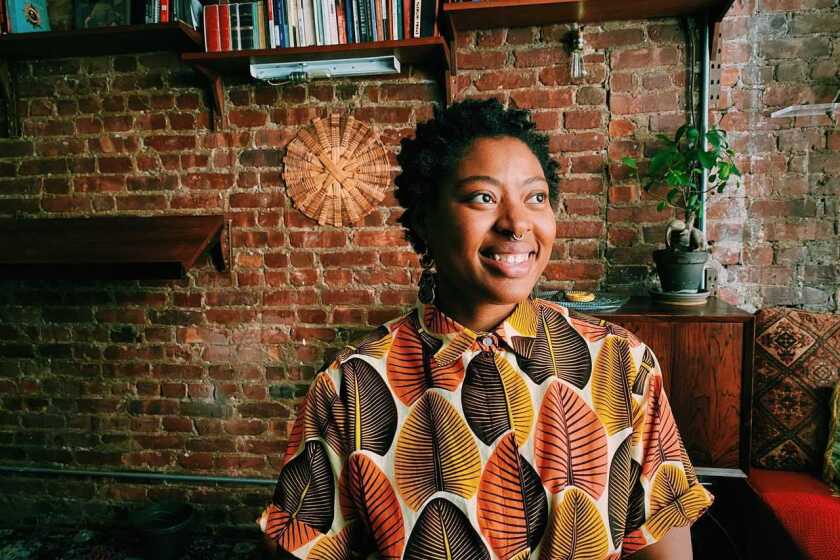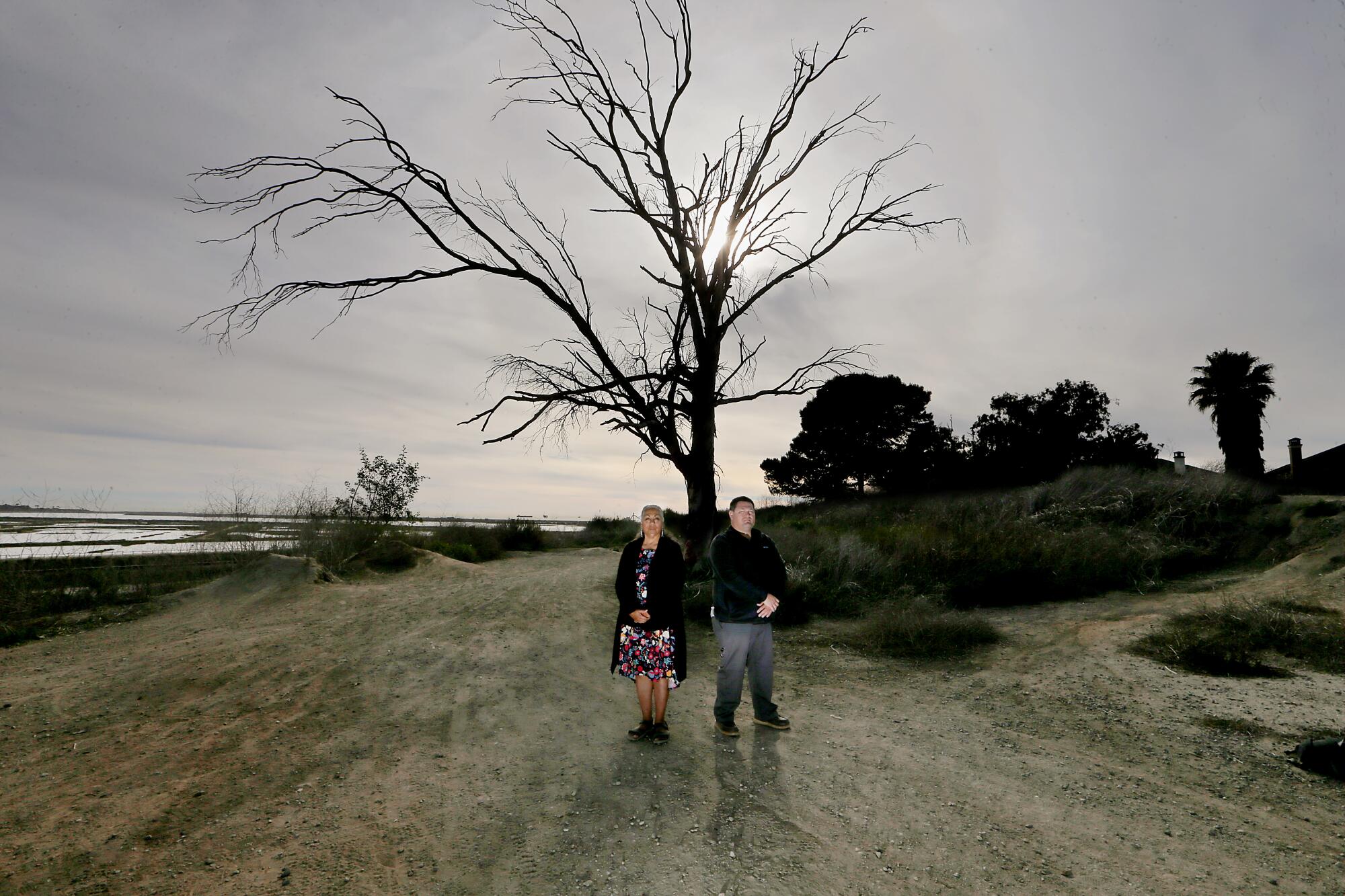
- Share via
As far back as 9,000 years ago, the Acjachemen and Tongva people hunted, fished and foraged for nuts and berries at Bolsa Chica Mesa. This is where they gathered herbs for medicines and held prayer ceremonies. Here, on a raised landmass that overlooks the Pacific Ocean, is where they buried their dead.
Today, descendants of those original inhabitants can call a piece of the mesa their own once again.
With the recent transfer of 6.2 acres to the two tribes for conservation and cultural use, Indigenous Californians for the first time have land in Orange County that is back in their hands, a dedicated space where they can practice traditions that were in place millenniums before the construction of Stonehenge, the pyramids of Egypt or the temples of Greece.
It’s a major achievement for the LandBack movement in Southern California, a branch of the nationwide campaign by tribes to reclaim and protect ancestral territories that were encroached upon and seized by the United States — California included.
The acquisition announcement came as Native American leaders prepared to gather for the two-day White House Tribal Nations Summit, which kicked off on Wednesday with President Biden promising to usher in a new era of cooperation with Native Americans by giving them greater authority over their homelands. A delegation from California pressed administration officials to grant federal monument status to hundreds of thousands of acres, including areas that are important to Indigenous people in the San Gabriel Mountains, adjacent to Joshua Tree National Park and in the Medicine Lake Highlands near Mt. Shasta.
The Orange County parcel, which lies at the border of Huntington Beach, is minuscule by comparison but is deeply personal to two of the tribal leaders who will help lead the restoration of the oceanfront site: Dustin Murphey, who is Acjachemen, and Tina Calderon, who is of Tongva as well as Chumash, Mexican and Yoeme descent. They are the president and treasurer respectively of the nonprofit Acjachemen Tongva Land Conservancy, a coalition dedicated to acquiring, preserving and protecting the tribes’ shared homelands in Southern California.
A fierce ocean breeze rustles the trees and hawks circle low overhead as Calderon and Murphey make their way down a dirt path at the site. They wind through an expanse of crackling stands of arid brush, shaggy palms and tall yellowing grass that’s surrounded by beach homes, apartments and a wetland reserve.
Inspired by Octavia Butler’s Afrofuturist fiction, a Sonoma County farmer helps Black Californians connect with nature and learn lessons in climate resilience.
They say that to understand what it means for tribes to reclaim a piece of California, you have to understand that “land” means something different to their communities.
“We hold title — that’s a huge thing,” Calderon says.

But tribal members didn’t just get land back. Given many attempts over centuries to displace Indigenous Californians and erase their culture, gaining territory is tantamount to reclaiming a part of yourself, Calderon and Murphey say.
By naming it the Chief Ya’anna Learning Village, a school official said they will pay tribute to an Indigenous leader who offered refuge to Indigenous immigrants.
To be Tongva or Acjachemen means to live as one with an ecosystem that your creator placed you on Earth to safeguard. Land isn’t merely property to be delineated, appraised, bought and sold for personal gain.
Private property “is a foreign concept for our people,” says Calderon, whose Tongva tribe has roughly 3,000 members. “We didn’t own land.”
The ground beneath your feet has a soul. It’s your kin. It doesn’t belong to you as an individual, but you belong to it.
That ancient belief system is embedded in the name of Calderon’s tribe: Tongva translates loosely as “people of the Earth.”
“For most Native Americans in Southern California, we’ve always thought of ourselves as stewards, even though we didn’t hold title to the land,” Murphey says. “It’s even more important now that we do.”
Calderon recalls awkward encounters with those who come to the adjacent nature reserve, with its 200 bird species, where some walk along trails built over the saltwater and freshwater wetlands and others lose themselves in the roar of the surf.
She relays one experience last year during an annual procession in which tribal members stopped at several sacred sites in the area.
When the group reached Bolsa Chica Mesa, they were greeted with stares from non-Native people who had set up picnic chairs at the edge of the property to watch planes performing maneuvers at a nearby air show.
“We couldn’t even have our songs and our prayers without them looking at us like we’re bothering them,” says Calderon, 62, who lives in the San Fernando Valley.
Angela Mooney D’Arcy of the Sacred Places Institute for Indigenous Peoples says Native Americans and other historically oppressed Californians should share in the fight for reparations.
The cultural significance of this place isn’t evident to many, even though the mesa, which is about 12 acres, has long been mired in land-use battles. Prehistoric skull and bone fragments were unearthed by a residential construction crew in 1992, prompting calls from Indigenous groups and environmentalists to halt bulldozing at the site. One anthropologist assessed the archaeological find, which was dated to about 8,000 years ago, as “one of the very few we have from that time period.”
Controversy also arose in 1999 after a work crew discovered cranial bone fragments and a tooth. The excavated remains of an estimated 160 Acjachemen and Tongva ancestors were reburied as efforts to prevent further damage to the site continued.
In 2016, the Bolsa Chica Land Trust, an environmental conservation group, reached an agreement with Huntington Beach and state officials and private property owners to donate most of the mesa so that it could be kept as open space. That was a key step toward transferring the 6.2-acre parcel, once owned by the Goodell Family Trust, to the tribes.

Calderon and Murphey are dismayed by dirt bike tracks and moguls made of mud flecked with seashells that mar the mesa. Riding is no longer allowed.
The two can’t say whether the desecration was done purposely or because of ignorance. What’s important for them is that their people have more of an ability to restrict activities that threaten the grounds.
In addition to the ancestral graves, researchers have also excavated house foundations, hearths, beads, charmstones and rare, hand-carved cog stones. Theories abound about what the villagers who lived here did with the disks, but Calderon embraces the belief that they were used to read the stars.
A historian in Santa Barbara conducts tours to show that Latinos, who make up more than a third of the city’s population, are central to its existence.
Calderon’s yellow-and-gray striped shawl billows in the wind as she gazes toward the ocean. The land reclamation is still sinking in, but she is excited about the possibilities.
In addition to holding ceremonial gatherings here, the tribes have plans to clear out the dirt-biking structures, remove invasive plants and restore the land as a habitat for native flora and wildlife that can be sustained even as climate change and sea-level rise imperil vulnerable ecosystems such as these coastal lowlands.
“Imagine being able to harvest our medicines here and know that they’re safe and nobody’s spraying them,” she says.
Jamaica native Winsome Pendergrass is part of a surge of immigrants from Africa and the Caribbean. She supports solidarity among Black Americans, but has been shunned in return.
For Murphey, 45, a resident of Costa Mesa, receiving the 6 acres represents a steppingstone in the long campaign waged by Southern California tribes to achieve justice for all that was taken from them, starting with the Spanish colonization.
His Acjachemen tribe has about 1,900 members and its ancestral territory extends for about 65 miles from southern Los Angeles County and Riverside County south to what is now Camp Pendleton in San Diego County. With the transfer of title from the family that had owned Bolsa Chica Mesa to his tribe and the Tongva, in combination with other recent land returns, Indigenous activists have another reason to believe that perseverance can yield results, he says.
“It’s just an amazing thing to have happen,” Murphey says.
More than anything, Murphey says, he feels thankful for the hard work that successive generations of Acjachemen and Tongva people have done to raise awareness of the need for land returns.
“This happened because of them,” he says of earlier advocates. “We are standing on their shoulders.”
Pomona native Victor Glover Jr.’s selection for NASA’s Artemis II moon mission isn’t just historic. His fellow Black Americans say it will change how the world sees them — and how they see themselves.
Dark sunglasses protect Murphey’s eyes from the sunlight glinting off the ocean. He avoids displays of emotion, but his words convey the sorrow that stirs inside of him.
Though Murphey grew up in Lake County in Northern California, his family would come to visit Acjachemen relatives and take part in tribal events in and around San Juan Capistrano in Orange County.
Elders didn’t talk much about the pain of losing control over a territory that their people were the first to inhabit. The general attitude seemed to focus on the future rather than dwell on the past. Some of the family members he visited on those childhood trips have died — taking their memories with them.
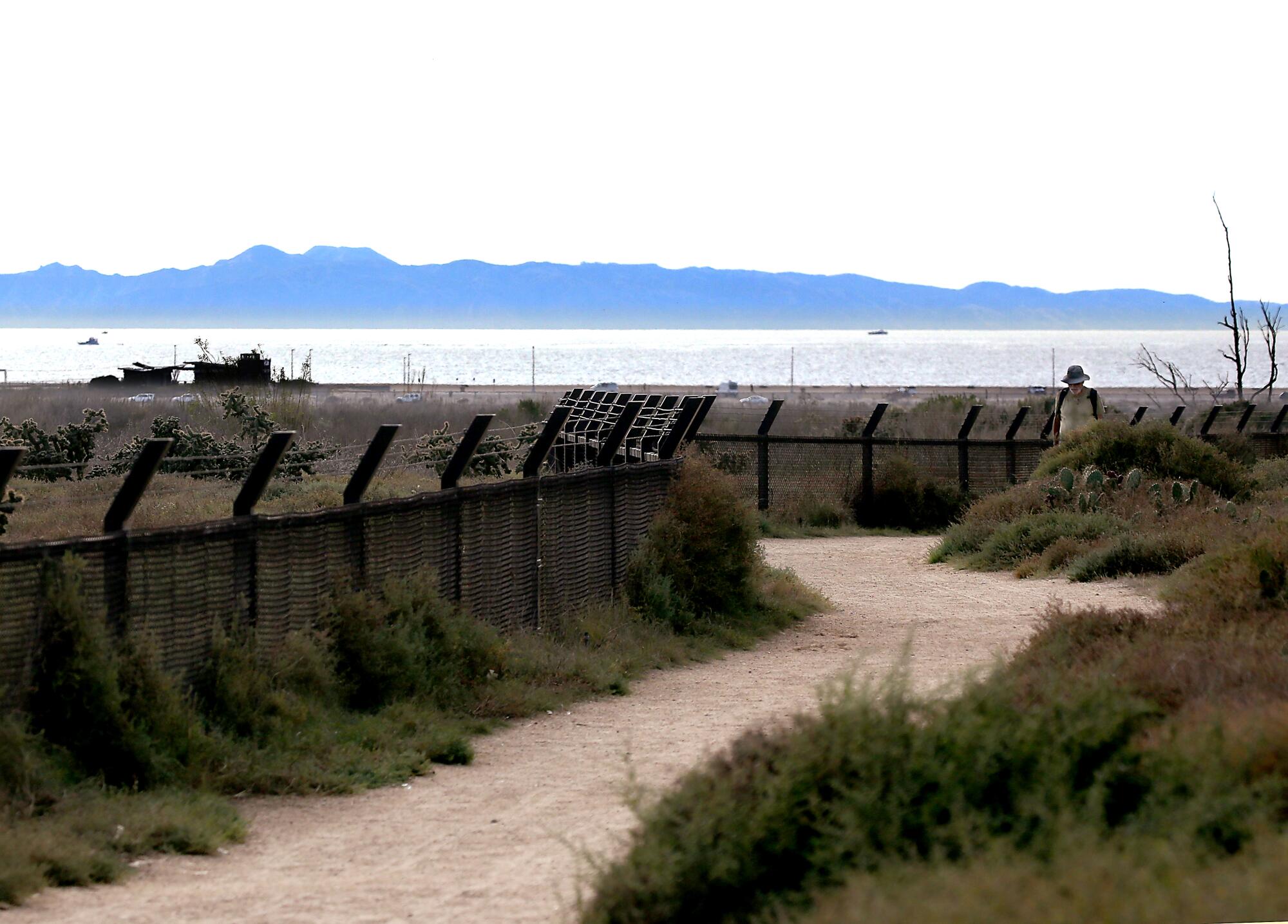
Calderon says that long-term plans for a land rehabilitation project — led by the tribes and guided by input from their members — can help descendants old and young process and move on from their shared trauma.
“Healing of the land means that we can heal the people,” she says.
California archaeologist Ayana Omilade Flewellen sees the war on AP Black studies and other teachings as a sign that America isn’t ready to confront injustice.
The Tongva and Acjachemen may have been deprived of their stewardship of the mesa, but Calderon and Murphey say the souls of the ancestors, plants and animals — and even the spirit flowing through the soil itself — never stopped watching over this place.
Calderon came prepared to give thanks to them all.
She unzips a cloth pouch of ground tobacco leaf mixed with sage and cedar.
“Tobacco is sacred to us — something we pray with,” she says.
“When I started visiting here several years ago, it always felt like it belonged to us but it didn’t belong to us, so when I would go through the gate, I always offered tobacco and I asked for permission to come onto the land,” Calderon says.
Her offering on this day held a different meaning, she says.
“I feel like at this point, I can stand here and if anyone said I can’t be here, I could say, ‘Yes, I can. ... It belongs to us, the people of the land.’”
More to Read
Get the L.A. Times Politics newsletter
Deeply reported insights into legislation, politics and policy from Sacramento, Washington and beyond. In your inbox twice per week.
You may occasionally receive promotional content from the Los Angeles Times.
